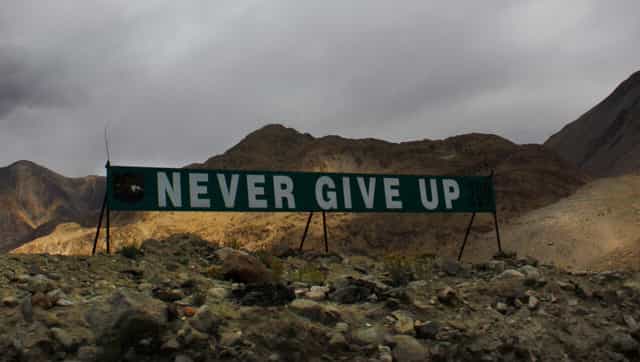Following the path of the caravans that once set out from Leh to the great East Turkestan cities of Yarkand and Kashgar, the small Indian Army patrol had begun to march east into the Chang Chengmo, turning north-west into the Kugrang Tsangpo river, pausing nights at the ancient camp-grounds of Katajila and Panglung before heading north-east across the 5,500-metre Changlung La pass. Then the path led north to a river whose name few Indians had then heard of: the Galwan. The 30 Gurkha soldiers, and their commanders, knew the mission was critical. “If the Chinese commanded the Galwan valley,” Intelligence Bureau chief BN Mullik had warned in a September 1961 letter, “it would give them easy access to Skardu, Gilgit, etc. and our routes to Murgo, Daulat Beg Oldi, Panamik would be cut.” Yet, perils lurked along the path the soldiers had to travelled on. In 1959, Indo-Tibetan Border Police officer Karam Singh had led a nine-man patrol into the Chang Chenmo. Ambushed by the People’s Liberation Army near the mouth of the Kugrang, where a hill is now named in Karam Singh’s memory, the patrol was annihilated.
§
Last week , China and India agreed to disengage troops at Patrolling Point 17A, near the Gogra pasture ground. Point 17A is part of a long arc of positions that mark the Line of Actual Control, numbered sequentially from Point 1 at Karakoram, then running through the Depsang Plains to Pangong Tso lake. The agreement, which follows on a similar
disengagement deal north and south of
Pangong Tso lake in February , marks small steps back from the abyss. In 1962, Galwan Post—reached through the same Gogra region where the Indian Army and PLA have been facing off—was wiped out. Early that July, a People’s Liberation Army patrol discovered the Gurkha soldiers in the Galwan, and cut them off. In October, a company of 5 Jat were flown in on Mi-4 helicopters to replace them—only to be overrun by an entire PLA battalion in October, among the spearheads of the war of 1962. This time around, India seems to have stood its ground on the Line of Actual Control—but the story isn’t as simple as it might seem. The disengagement process involves significant concessions by India. Yet, it also trades territory for time, giving India a chance to prepare for even bigger challenges. Government sources familiar with the discussions have told Firstpost that agreement was almost reached at the military-to-military talks last week on Patrolling Point 15, north of Gogra, falling through only because the PLA was unwilling to move its position back as far as the Indian Army wanted. Army negotiators are, however, optimistic there will be forward movement on Point 15. The PLA also appears to discuss the even-more contentious arc in the sprawling Depsang Plains, from Point 9 to Point 13, which Indian troops are unable to access because the PLA has cut off patrol routes. This much is clear, though: the agreement on Point 17A is a somewhat unhappy compromise. Although the
official statement on the disengagement is conspicuously short on detail, Government sources say the agreement commits Indian troops to fall back to their permanent posts at Point 17, near Gogra, at the confluence of the Changlung La stream and the Kugrang river. In turn, the PLA will pull back to semi-permanent positions some two kilometres north-east of the LAC.
§
Even though India’s concessions might upset military hawks, the uncertain future of the China-India relationship means they make sound strategic sense. The crisis on the LAC has involved a grinding and expensive forward deployment, which has sucked-in ever greater numbers of troops. The Army has already repositioned two infantry divisions earlier committed to the I Strike Corps, facing Pakistan, and moved the Allahabad-based 4 Division and the Bareilly-headquartered 6 Mountain Division to guard Ladakh. Although media reports have spoken of a Strike formation being positioned in Ladakh, this is not the case: the I Corps’ Hisar-based 33 Armoured Division will remain in the plains, since its tanks have little relevance in mountain warfare. Larger numbers of troops, moreover, won’t fix India’s problems. Logistics experts estimate China’s high-speed rail and roads could allow the PLA’s 76th and 77th combined-arms Group Armies to move up to seven division-sized formations into the TAR inside a week, and over 32 inside a month. The PLA already has all-weather road access to the 31-odd major passes across the LAC, linked to highways cutting across the TAR. In essence, Ladakh—terrain where India, facing the high mountains, faces an inexorable geographical disadvantage against the PLA, which is on a plateau—threatens to become a black hole, swallowing up already-strained Army resources. As ever-more-powerful China aggressively projects powers across its peripheries, from the South China Seas to the Himalayas, India will have to grow the resources to meet the challenge—and conceive of new ways to use the defensive and deterrent capabilities it develops. “Five kilometres more land we have or five kilometres less—this is not important,” Soviet premier Nikita Khruschev admonished Mao Zedong after the 1959 clashes in India. In 1962, India’s core mistake was believing the assertion of minor territorial claims, using inadequate forces, was more important than building robust defensive and deterrent capabilities. The disengagement process might just have avoided that trap.


)

)
)
)
)
)
)
)
)



